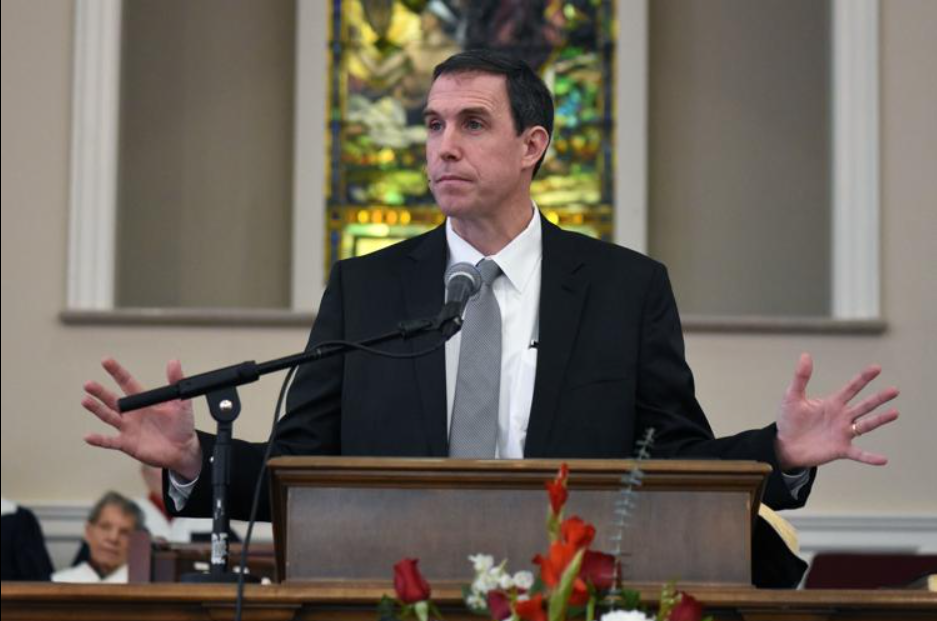
Pastor Dan Carlton of Culpeper Baptist Church details the church's history during a sermon Sunday morning, Feb. 10, at the church on South West Street in downtown.
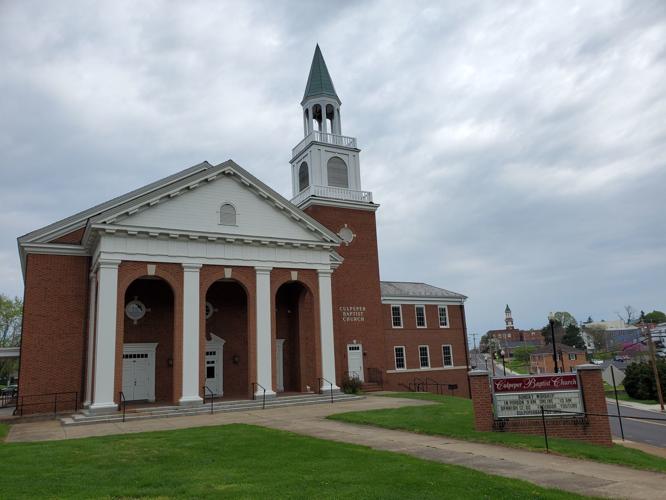
The Steeple Bell at Culpeper Baptist is named for James Ireland, who was jailed in Culpeper in 1769 -70.
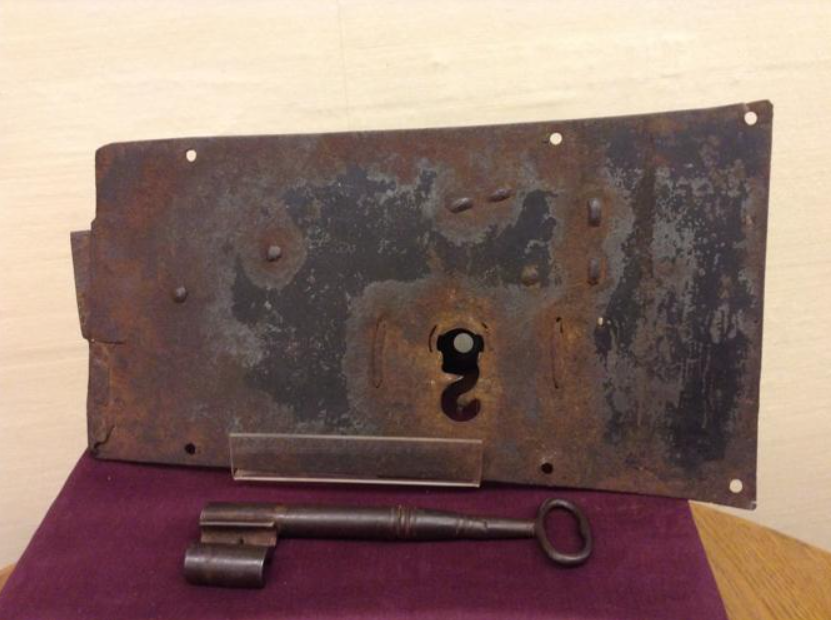
The Colonial lock and key from the Culpeper Jail are cherished relics on view at the Virgina Baptist Historical Society on the University of Richmond campus. Baptist preacher James Ireland, persecuted by the Anglicans, was held at the jail in 1769-70
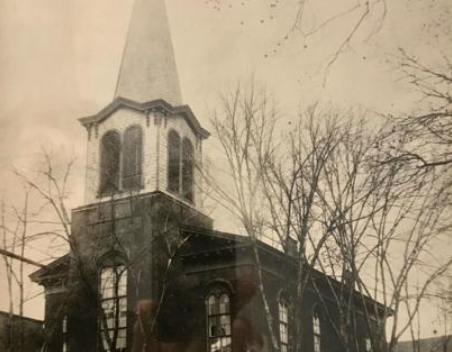
Culpeper Baptist Church, as it stood at East and Davis streets from 1859 to 1892, when it was destroyed by fire. This site is were the Culpeper Jail stood in Colonial days.
The lock and key belonging to the Culpeper Jail in the 1770s is a treasured relic preserved by the Virginia Baptist Historical Society in Richmond.
“The Culpeper stories are foundational in the Baptist narrative and the struggle for religious liberty,” said Nathan Taylor, the society’s executive director.
When the society was established in 1876, the group began collecting artifacts, and the jail’s lock and key were among the first items obtained for that collection, Taylor said.
“Culpeper is sacred soil for all lovers of religious freedom,” wrote John Broadus (1827-1895), a Baptist pastor who was president of the Southern Baptist Theological Seminary.
Last Sunday, Culpeper’s history with religious freedom was reviewed in a sermon delivered at Culpeper Baptist Church by the Rev. Dan Carlton.
“I give roughly the same sermon every year at about this time,” Carlton said in an interview this week. “I think it’s something we need to revisit often, but more people, especially those who live in Culpeper, should be aware of this history.”
What happened?
Many Baptist ministers were imprisoned in Culpeper before the U.S. colonies gained their independence and drew up their own governing documents.
During his sermon, Carlton listed 14 ministers by name, including Nathaniel Saunders, the founding pastor of Culpeper Baptist Church, or Mount Poney, as it was known in his day.
In the early 1770s, a license was required by the British crown in order to preach.
“These Baptists, many of them the product of the Great Awakening, felt they shouldn’t need to ask if they could preach or not,” Carlton said. “They were willing to suffer to show their dedication for teaching the gospel.”
Taylor said authorities in the late 1760s and early ‘70s required those seeking such a license to go to Williamsburg to get it, as well as restricting its user to specific, “appropriate” theology.
“Among the most famous stories is that of James Ireland, who was thrown into the Culpeper jail from November 1769 until April of the following year,” Taylor said.
The Culpeper Jail was a dank and miserable place, and the stories say Ireland endured beatings, a smoke bomb, and even attempts to poison him by supporters of the Anglican church, who were in authority at the time.
Nevertheless, Ireland continued to preach through the jailhouse window, and supporters brought him food, blankets, and words of comfort.
“Ireland was at first abused by his cellmate, a rough character, but then he was able to win him over,” Taylor said. “The man became so dedicated to Ireland that he became kind of a bodyguard for him.”
Built in 1749, the jail stood at the corner of East and East Davis streets.
In 1859, Culpeper Baptist Church built a sanctuary there, but the structure burned down in 1892. The congregation constructed a new church building, which survives today as the Free Gospel Church of Christ in the heart of downtown Culpeper.
More than five decades ago, Culpeper Baptist Church built the core of its current meetinghouse on West Street; it has been added to over the years.
Free exercise of religion
Carlton said that with the Revolutionary War and the transition to the new form of government established by our nation’s founding fathers, the number of Baptists in Virginia grew, as did their influence.
But the Baptists didn’t forget the persecution they had suffered. They continued to cherish the value of worshipping God according to the dictates of conscience, rather than being told what to think or feel about religion or being forced to pay taxes to support an institution with which they disagreed.
John Leland, pastor of Mount Poney in the late 1770s, met with James Madison on March 22, 1788.
“He told Madison that he would get the support of the Baptists in Virginia for his Constitution, provided he would make an amendment for religious freedom,” Carlton said in his sermon.
Leland wrote in The Virginia Chronicle that “The liberty I contend for is more than toleration. The very idea of tolerance is despicable, it suggests that some have a pre-eminence above the rest, to grant indulgence, whereas all should be equally free, Jews, Turks, Pagans and Christians.”
Leland’s influence, Carlton asserts, led to Madison including the First Amendment in the U.S. Bill of Rights, which states, “Congress shall make no law respecting an establishment of religion, or prohibiting the free exercise thereof.”
“You can’t talk about religious freedom in the United States, or even the world, without talking about the Baptists of Culpeper,” Carlton said.
Religious Freedom Day
On Jan. 16, 1786, the commonwealth of Virginia enacted its Statute for Religious Freedom, written by Thomas Jefferson and setting forth the principle that religious liberty is an inherent right and not a gift of the state.
It was this document that helped inspire and model the protections outlined in the First Amendment, drafted by James Madison just a few years later.
Every year in Fredericksburg on Jan. 16, a parade and a ceremony are held to celebrate Virginia’s involvement in establishing religious freedom. Jefferson came to Fredericksburg in 1777 as part of a committee tasked with revising Virginia’s Colonial laws. During this visit, Jefferson drafted the Virginia Statute for Religious Freedom.
A monument commemorating this event was later erected in Fredericksburg at 1501 Washington Ave., not far from the obelisk honoring Mary Washington, George Washington’s mother, where she went to pray for the safety of her son during the Revolutionary War.
“Some day, it would be great to have some kind of monument in Culpeper honoring our heritage with helping to establish religious freedom,” Carlton said. “I would love to see that happen.”
Culpeper today
Nowadays, people visit Culpeper to honor its role in establishing the foundation of religious freedom in the United States.
“Once or twice a year, we have groups who come from places across the nation and stop by our church because of its story,” Carlton said.
Growing up as the son of a pastor in Richmond, Carlton said he was taught the Culpeper stories as far back as he can remember.
“I would love for Culpeper as a community to say, ‘what does it look like to renew the conversation around religious liberty in our culture that is so divided today?’ ” Carlton said. “Religious liberty is based on respect and love for everyone around us, in appreciating that diversity and recognizing the value of it, of learning from it and making us each stronger because of it.”
We invite you to come in and be
a part of the conversation. Connect with others in our community either on Sundays or throughout the week and join us as we connect…one person at a time.